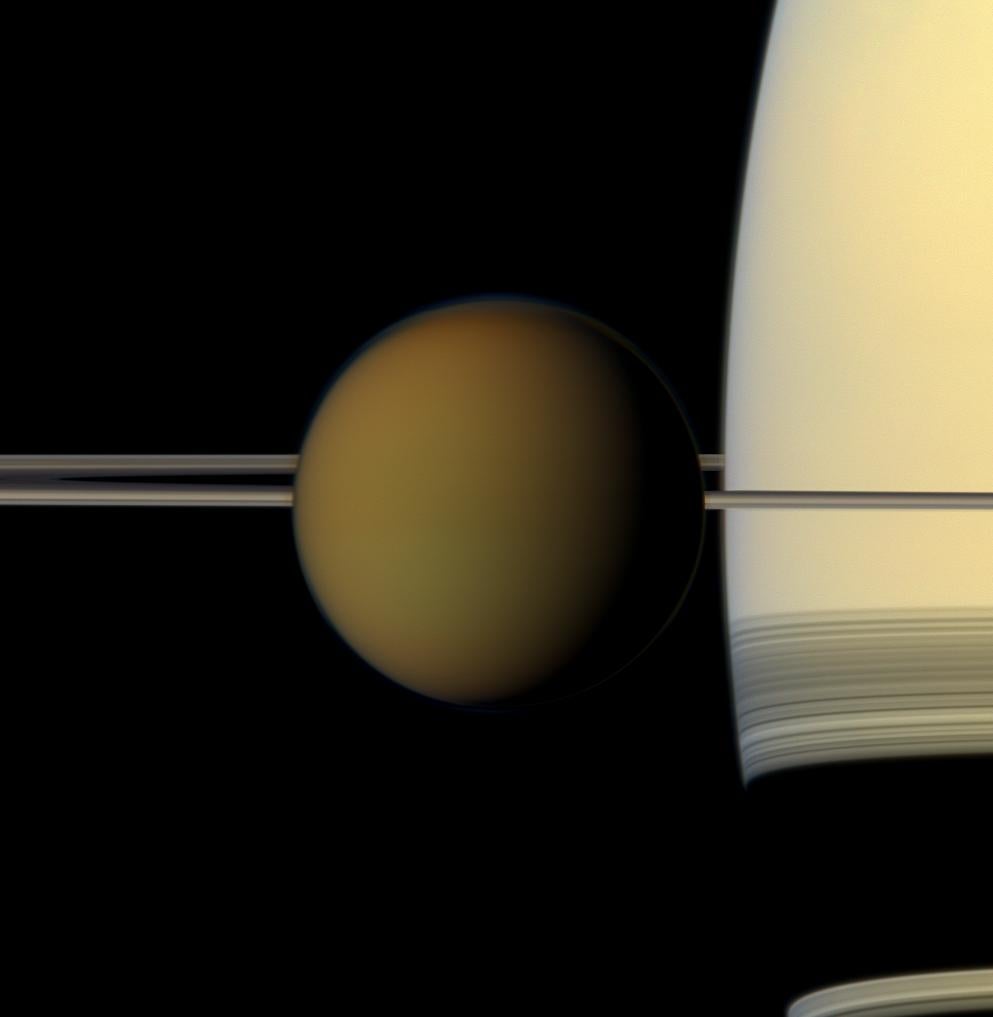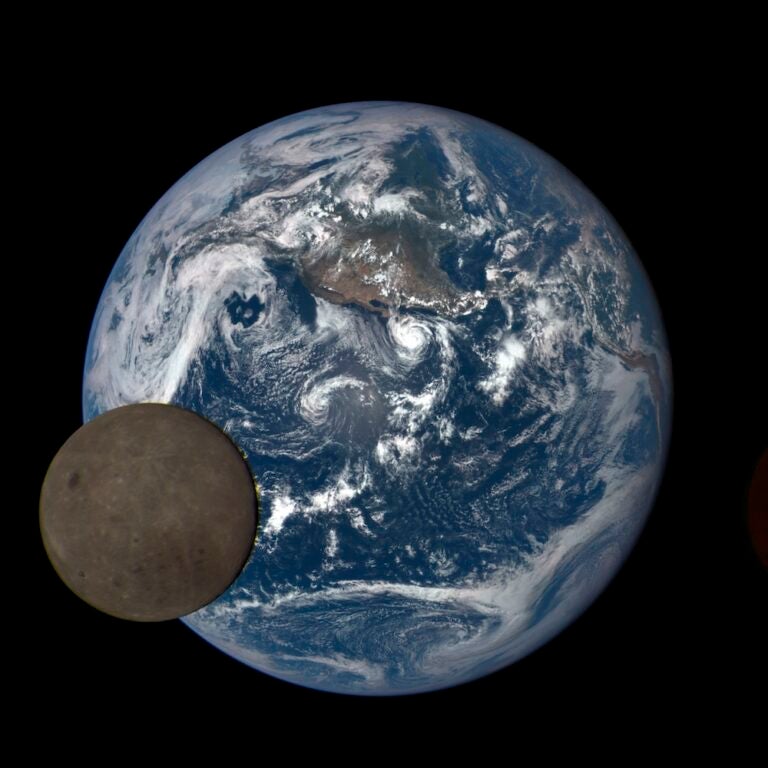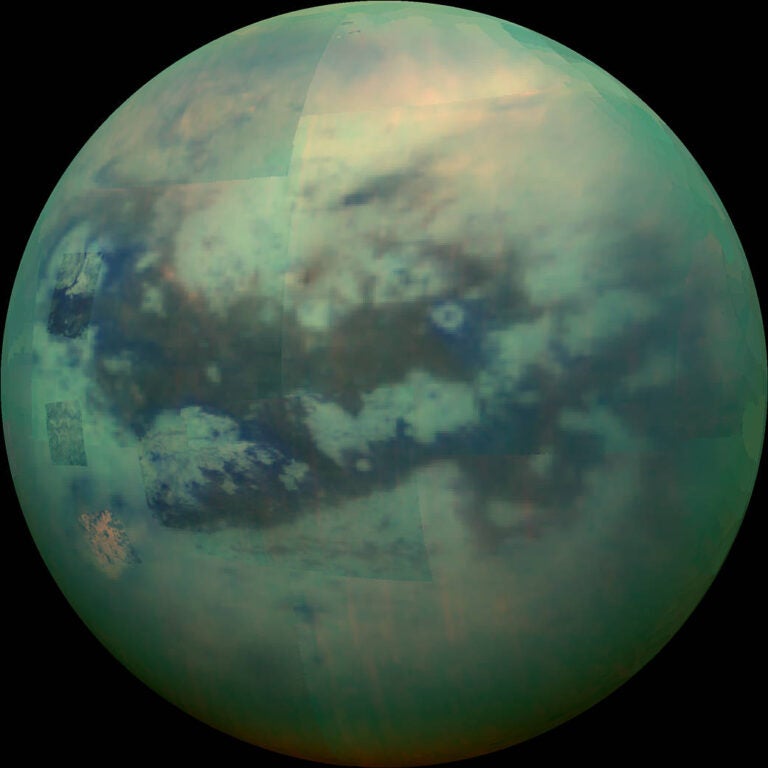Apart from Earth, Titan is the only body in the solar system known to possess surface lakes and seas, which have been observed by the Cassini spacecraft. But at Titan’s frigid surface temperatures — roughly –292° F (–180° C) — liquid methane and ethane, rather than water, dominate Titan’s hydrocarbon equivalent of Earth’s water.
Cassini has identified two forms of methane- and ethane-filled depressions that create distinctive features near Titan’s poles. There are vast seas several hundred miles across and up to several hundred feet deep, fed by branching river-like channels. There also are numerous smaller shallower lakes with rounded edges and steep walls that are generally found in flat areas. Cassini also has observed many empty depressions.
The lakes are generally not associated with rivers and are thought to fill up by rainfall and liquids feeding them from underground. Some of the lakes fill and dry out again during the 30-year seasonal cycle on Saturn and Titan. But exactly how the depressions hosting the lakes came about in the first place is poorly understood.
Recently a team of scientists turned to our home planet for the answer. They discovered that Titan’s lakes are reminiscent of what are known as karstic landforms on Earth. These are terrestrial landscapes that result from erosion of dissolvable rocks, such as limestone and gypsum, in groundwater and rainfall percolating through rocks. Over time, this leads to features like sinkholes and caves in humid climates and salt-pans where the climate is more arid.
The rate of erosion creating such features depends on factors such as the chemistry of the rocks, the rainfall rate, and the surface temperature. While all of these aspects clearly differ between Titan and Earth, the researchers think the underlying process may be surprisingly similar.
A team led by Thomas Cornet of the European Space Agency calculated how long it would take for patches of Titan’s surface to dissolve to create these features. They assumed that the surface is covered in solid organic material and that the main dissolving agent is liquid hydrocarbons, and they took into account present-day models of Titan’s climate.
The scientists found that it would take around 50 million years to create a 300-foot (100 meters) depression at Titan’s relatively rainy polar regions, consistent with the youthful age of the moon’s surface.
“We compared the erosion rates of organics in liquid hydrocarbons on Titan with those of carbonate and evaporite minerals in liquid water on Earth,” said Cornet. “We found that the dissolution process occurs on Titan some 30 times slower than on Earth due to the longer length of Titan’s year and the fact it only rains during Titan’s summer. Nonetheless, we believe that dissolution is a major cause of landscape evolution on Titan and could be the origin of its lakes.”
In addition, scientists calculated how long it would take to form lake depressions at lower latitudes where the rainfall is reduced. The much longer timescale of 375 million years is consistent with the relative absence of depressions in these geographical locations.
“Of course, there are a few uncertainties. The composition of Titan’s surface is not that well constrained, and neither are the long-term precipitation patterns, but our calculations are still consistent with the features we see today on Titan’s relatively youthful billion-year-old surface,” said Cornet.
“By comparing Titan’s surface features with examples on Earth and applying a few simple calculations, we have found similar land-shaping processes that could be operating under very different climate and chemical regimes,” said Nicolas Altobelli from ESA. “This is a great comparative study between our home planet and a dynamic world more than a billion kilometers away in the outer solar system.”










